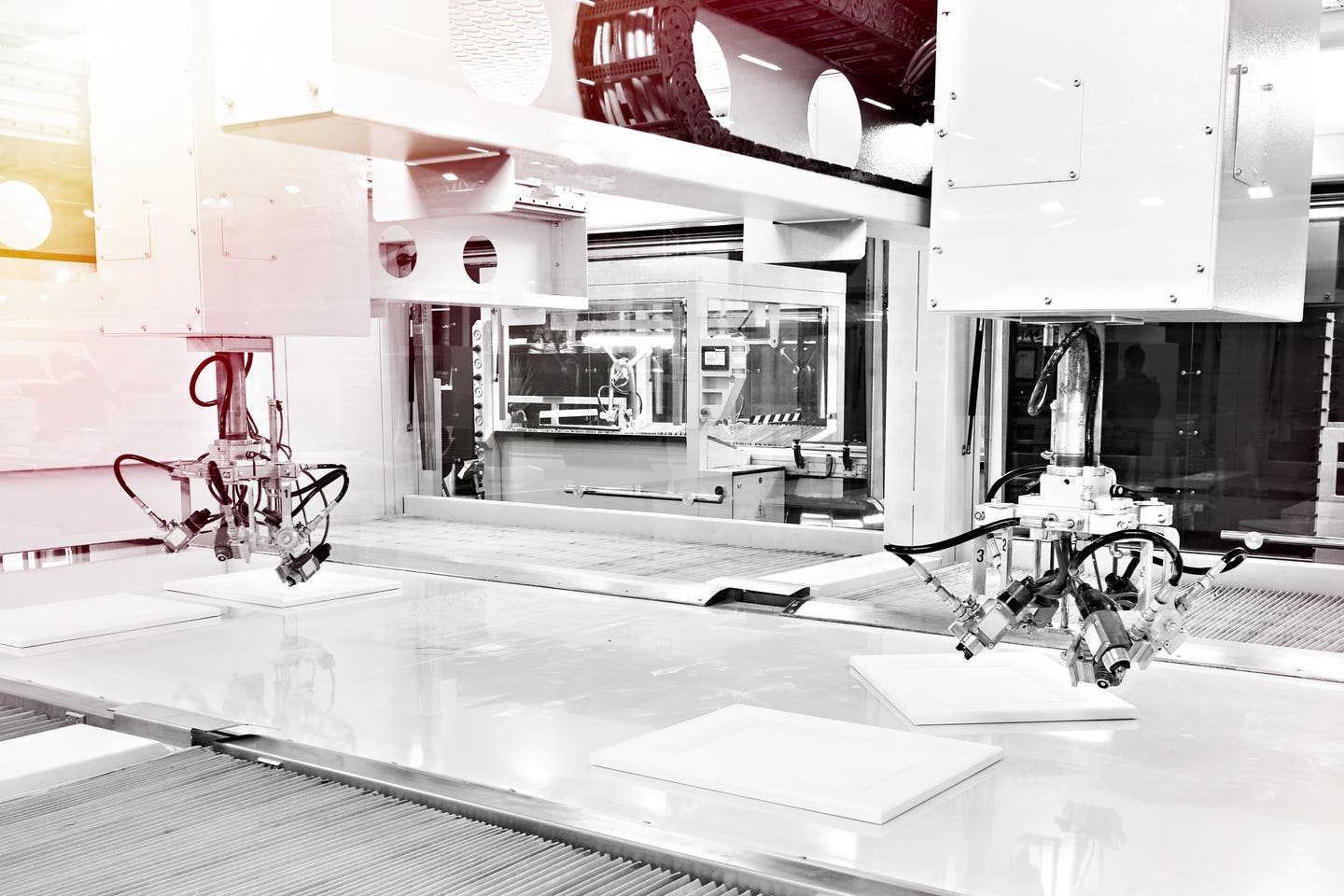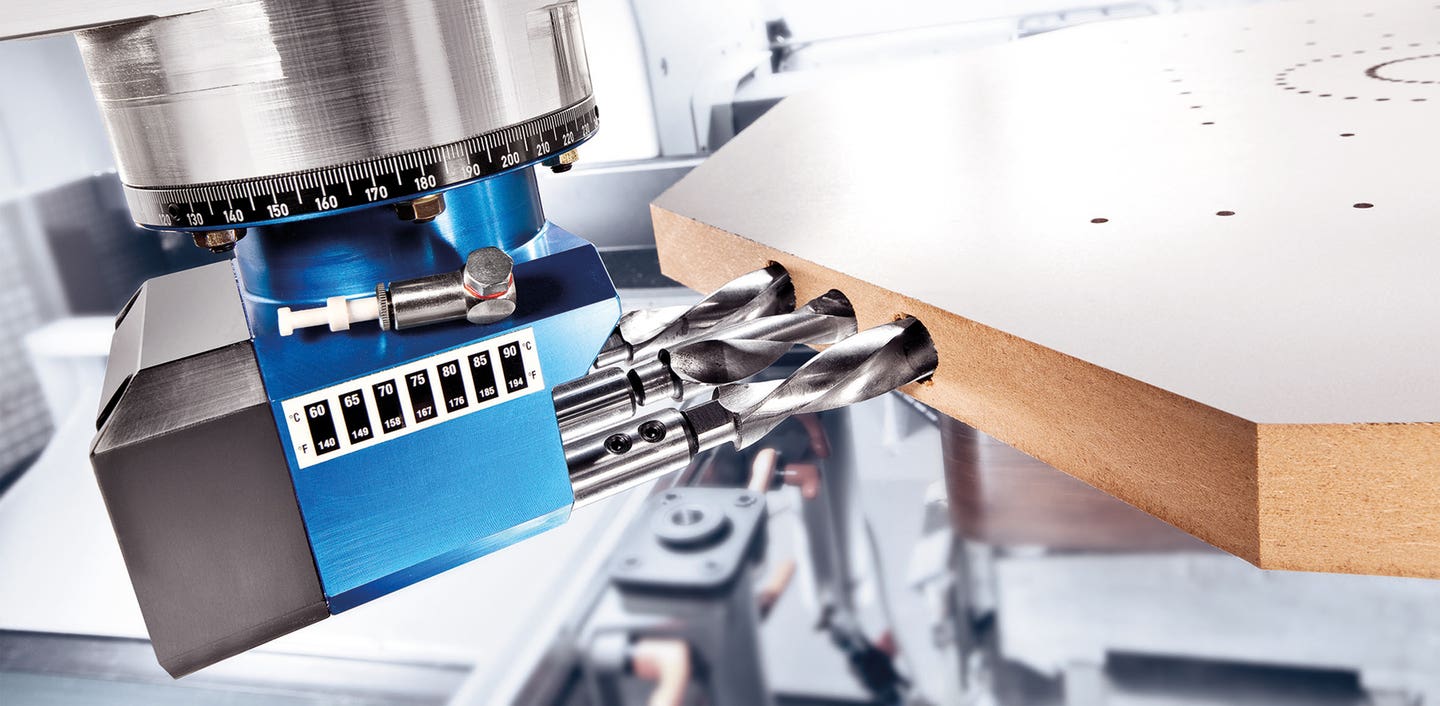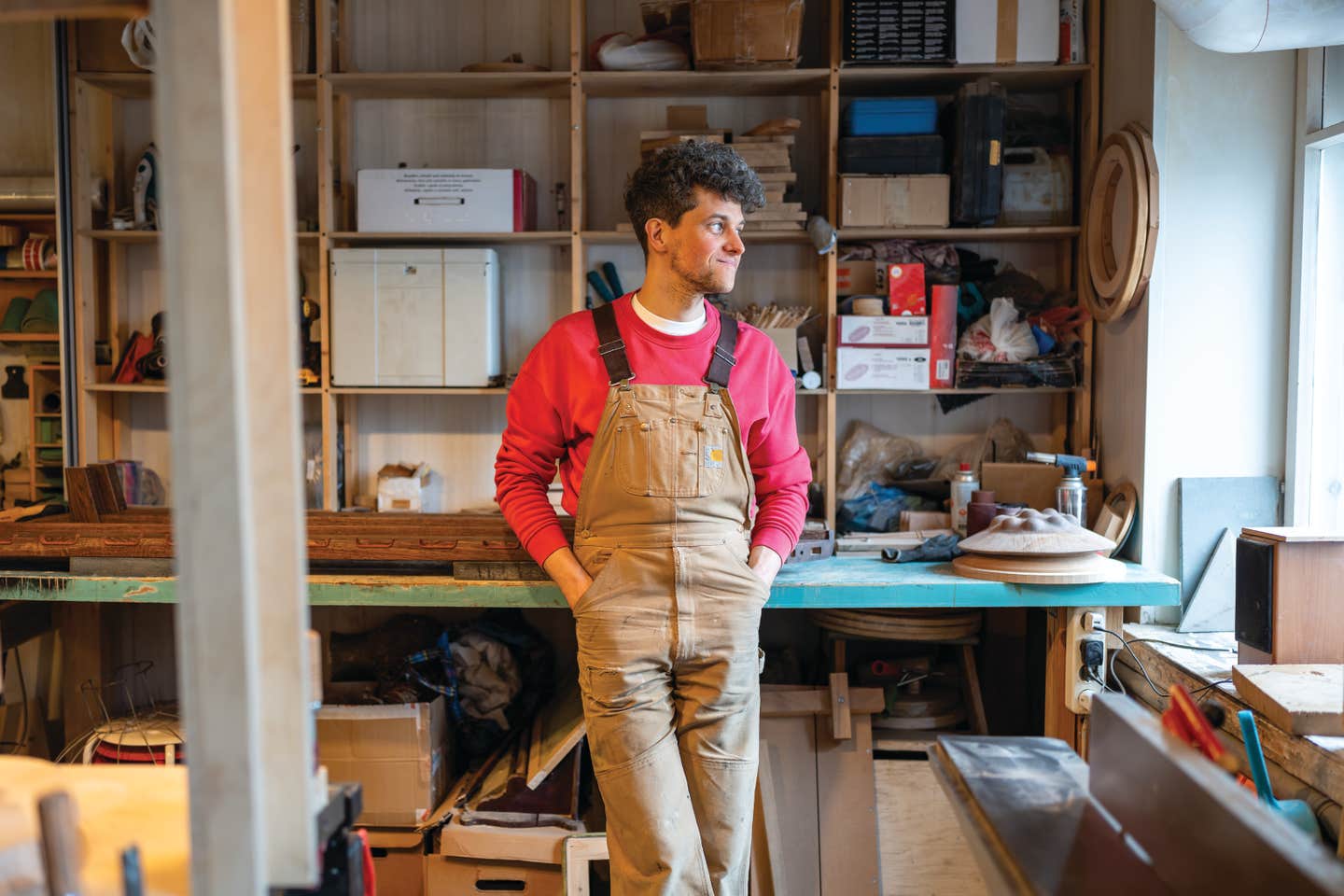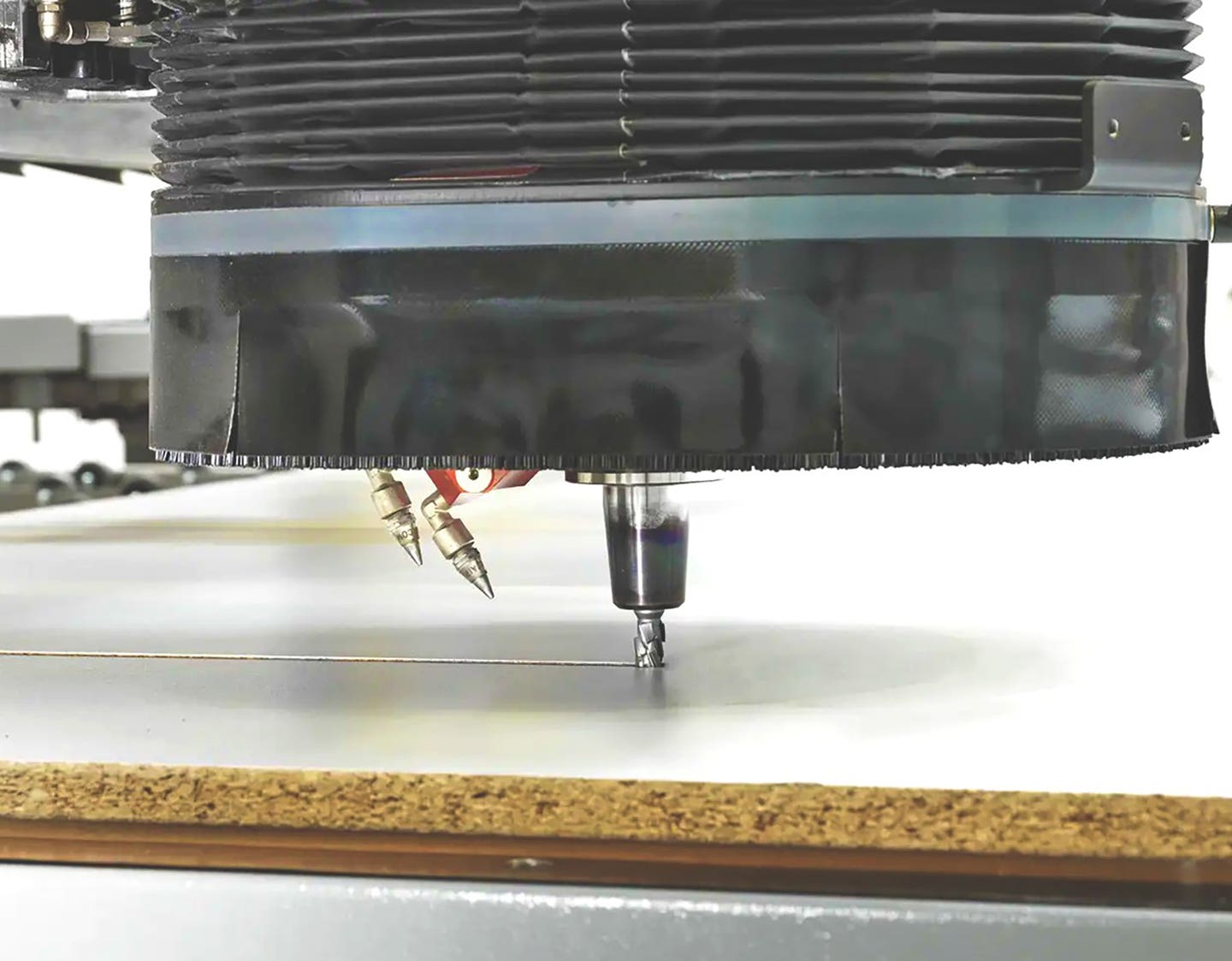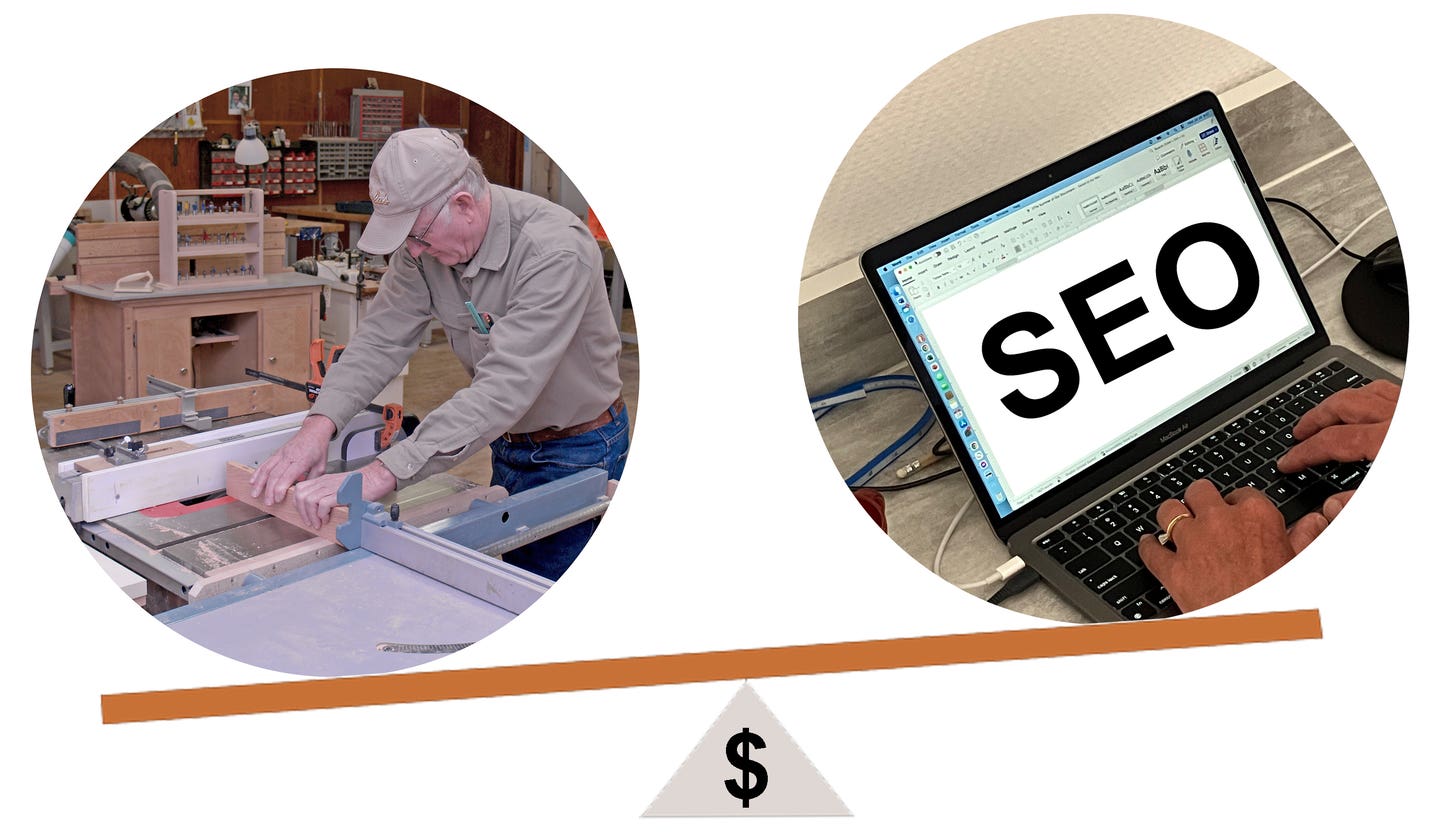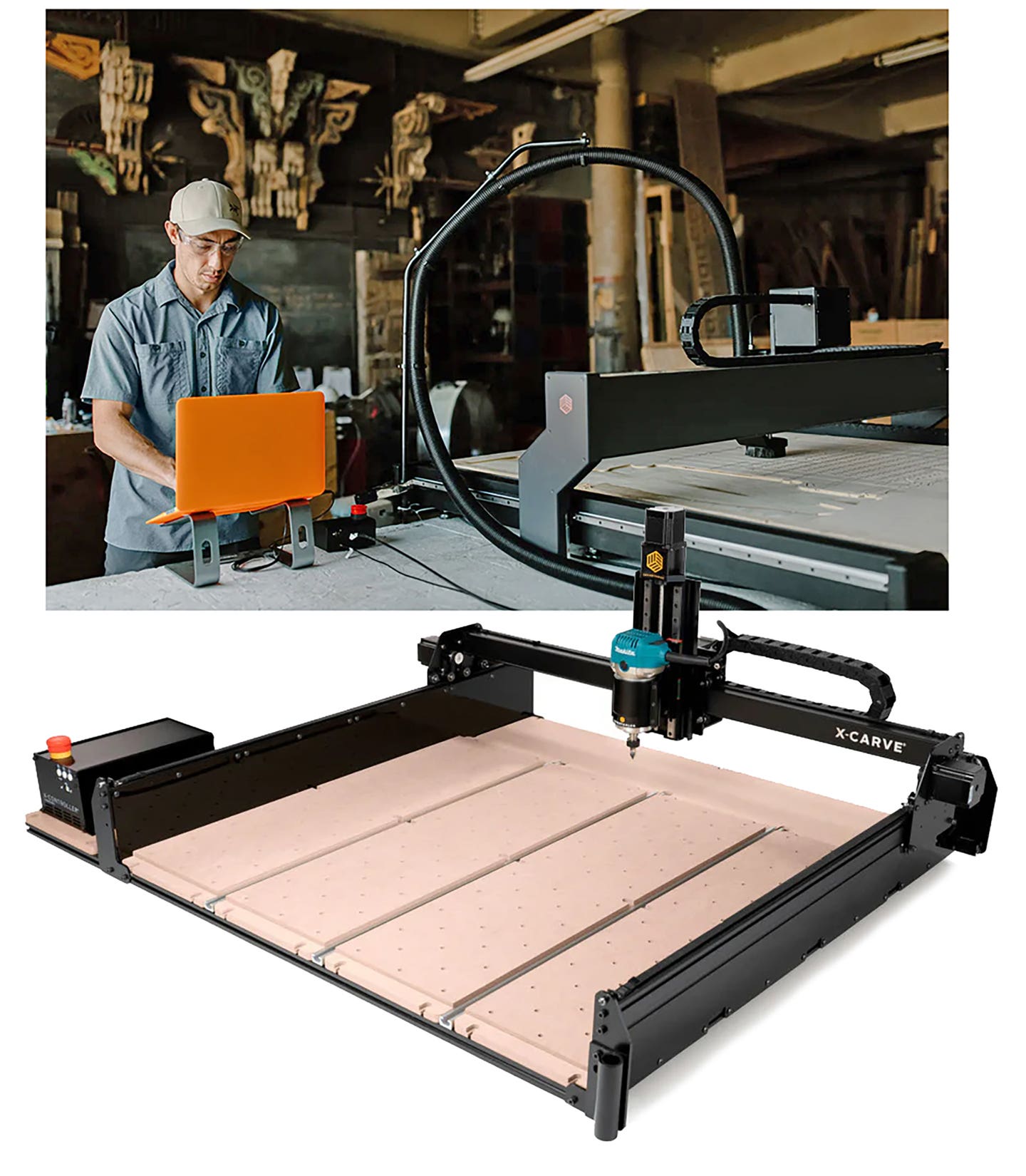Doing it right
It’s hard to believe Mark Richey Woodworking in Newburyport, Mass., started as a one-man shop. Specializing in architectural millwork, the company has 110 full-time employees and anywhere from 50 to 300 subcontractors on the payroll.
It’s hard to believe Mark Richey Woodworking in Newburyport, Mass., started as a one-man shop. Specializing in architectural millwork, the company has 110 full-time employees and anywhere from 50 to 300 subcontractors on the payroll. Its management has invested millions into automated machinery, as well as sustainable energy solutions to give the facility a greener footprint for generations ahead.
MRW generates $30 to $40 million in volume of work annually. Its work can be found in corporate offices, public spaces, educational settings, restaurants, retailers and homes across the country. Key management includes president Mark Richey, COO Greg Porfido, and CFO Teresa Richey.
Mark Richey has summited Mount Everest so it’s no surprise that his namesake business continues to scale new heights. The company’s market is basically North American and beyond.
“We’ve done work all over the country, and a smattering overseas in Germany, the Caribbean islands, South America, and Canada. We’ve talked about trying to do more. We’d love to maybe go to the (United Arab) Emirates or Saudi Arabia,” he says.
The beginnings
After high school, Richey spent some time making doors and took an apprenticeship with William Dowd, a master harpsichord builder in Cambridge, Mass.
“I’d done all types of woodworking but that was fascinating to me because it’s so detail intensive and the quality was so high. In many ways it was my most important training. These are hand-made instruments with thousands of parts and the quality resonated with me and inspired me,” says Richey.
“I was only there two years. After that I worked for a timber framer and small furniture maker and started my own business in ’81,” says Richey, also a student of architecture, a skill that has allowed his company to solve some tough design challenges over the years. He and Teresa married in 1985 and they grew the business, which started out making custom furniture and kitchen cabinets.
“Growth came for a bunch of reasons,” he says. “Certainly, from the beginning, I never thought I’d have a woodworking business like this. It never even occurred to me. I did have dreams of building exquisite furniture and having a shop with highly skilled craftspeople. We kind of gravitated into custom architectural work because that’s frankly how you make a living in this industry doing custom work.”
Porfido joined the team in 1988. A graduate of the North Bennett Street School in Boston, where Richey posted a help-wanted notice, he quickly settled into the role of running the day-to-day operations. This allowed Richey to spend three months climbing Everest.
“It was the first time I was able to leave the company for such a long amount of time. Greg was a newer employee but had affinity for management and was interested in the big picture of MRW,” says Richey.
Back then, communications were extremely limited, requiring runners to descend into town and deliver messages to and from climbers. Richey was touched when Teresa trekked out to visit him at base camp, toting a video that Porfido had made to show him what was happening in the shop.
“I was so excited to get the news they had started a new project we hadn’t started when I left. They were making chairs for a table and Greg was in the video showing me the joinery,” says Richey.
No job too big
Remember, MRW made the jump from traditional woodworking, using benches and hand tools, to tackling large-scale projects. This, of course, required an investment in cutting-edge technologies and a hiring frenzy. There are currently about 65 cross-trained craftspeople, and about 45 on the management, drafting, engineering, estimating, administrative and marketing teams.
“We have a large company to feed, so we go after some very complex, higher-end projects, and we look for opportunities where we can bring our design-assist knowledge to the table. That is what separates us even more,” says Richey.
Porfido says the shop doesn’t do vanilla projects. “We’re not going to do a major hospital job with a bunch of plastic laminate and nurses’ stations in Houston. So many people can do that. It’s too competitive. We want things that are complex in nature, at least a component of it. This way we can be very competitive.”
Clients include general contractors, architects and property owners. With all that’s going on, problems and questions pop up constantly. Decisions need to be made quickly and often, and of course, with on point accuracy.
The company is known for strategically planning and managing its work. Richey spearheads that effort, helps with sales and estimating, and communicates with clients. He says his experience from architectural school allows him to consult easily with architects and other clients on matters of engineering, wood and finish selection, and cost analysis.
“The way we run the team is very effective,” says Porfido. “You’ve got to remember you only get one chance to do this stuff right, both for the customer and for yourself in terms of being profitable. It’s not like you get to try it a bunch of times and then say okay, let’s do it the right way.
“In the shop you need people to really show up every day and take ownership of what they do. Same with the project management and drafting departments. We need people to just own it like it’s their own business.”
True sustainability
MRW is 100 percent powered by the wind and sun. As the company grew, Richey and his team made sustainability a priority by reducing the facility’s carbon footprint. In 2007, a clean-burning biomass furnace was installed. In 2009, a 300’-tall, 600kw wind turbine went up. In 2016, solar panels were added.
“Greg and I, and others here, are fascinated with the idea of being self-sufficient and using every opportunity to make our shop efficient and cost-effective business. Renewable energy is one way to do that,” says Richey, who enjoys inspecting the top of the turbine in a full harness, getting in touch with his mountaineering side.
“But the bigger reason is our desire to be better stewards of the environment, and a lot of that comes from me as someone who spends a lot of time in wild places as a mountain climber and explorer. I have another great passion - the environment and natural world - so being in the place where we could have the most impact is here, especially since we have grown. We made a commitment early on to be as good a steward as we could.”
Richey and Porfido were inspired from a trip to Europe, where every shop they visited was burning their wood waste for heat. Getting started wasn’t an easy decision, according to Porfido, which is why many U.S. shops haven’t followed suit.
“You can have a desire and care about the environment, but when you’re in a business you’re fighting to survive. There are so many pitfalls where you can lose your shirt. A lot of woodworkers don’t know where the next job is coming from. It’s tough to think long term in this business. When you look at some of these investments, they are very expensive for us here in the U.S. and the paybacks aren’t even seen until over five years minimum,” says Porfido.
Richey says spending half a million dollars on a biomass furnace and $2.5 million on a wind turbine is a hard pill to swallow for other companies. “A lot of people would go buy a boat or something else they can enjoy. You need commitment and passion for the environment and the long haul, and a desire to take risk. From the beginning we had a healthy appetite for risk, not free-flying risk, but we researched it and made it work.
“The wind turbine has a 25-year life cycle. That’s probably well beyond my tenure here as president and maybe even Greg’s, so we’re looking to build a legacy here and hope it continues for several generations for people here and their kids,” says Richey.
Introducing a new division
Recently, MRW purchased the corporate furniture brand, WallGoldfinger Inc., to begin offering custom furniture with its diverse architectural offerings. Sales, estimating, engineering and project management will be overseen at WallGoldfinger’s facility in Northfield, Vt.
“What’s interesting is that Greg and I have talked about doing this for years. We have furniture backgrounds and have always loved furniture, but never had time to build a separate brand and furniture division. The architects and associates we work with have been asking, but the sales process in general happens separately from the architectural side. Buying the WallGoldfinger brand and then hiring their people gave us the ability to have that sales process.”
MRW is a member of the Architectural Woodworker Institute and U.S. Green Building Council. Outreach efforts are made to local schools and organizations by offering facility tours and other programs that highlight the eco-friendly nature of the business.
But Porfido says MRW is not about to rest on its laurels. It’s actively looking for the next wave of talent and ideas. “What’s happening is we’ve been in business 35 years and people are starting to retire. We really are looking for people, and top people. We’re looking for people in every department, from finishing to sales and estimating,” he says.
Contact: Mark Richey Woodworking, 40 Parker St., Newburyport, MA 01950. Tel: 978-499-3800. www.markrichey.com
This article originally appeared in the August 2018 issue.


